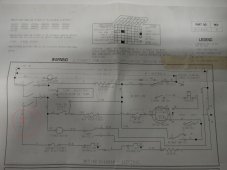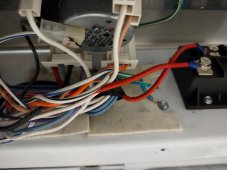Quattrohead
Solar Wizard
I had mentioned in another thread that I thought it should be possible to reduce the power consumption in half by half wave rectifying the power to the heating element.
I bought a 200A diode pack and installed it today and can confirm that the initial test says it can be done. I will continue to monitor it and blindly test it on "Her indoors"
Power has been reduced from 5200W to 2300W....the motor seems to draw around 500W from 1 "phase"
I decided to put the diode here in the schematic as it was convenient in the control panel

And here is the diode pack I used - Diode pack
I bought a 200A diode pack and installed it today and can confirm that the initial test says it can be done. I will continue to monitor it and blindly test it on "Her indoors"
Power has been reduced from 5200W to 2300W....the motor seems to draw around 500W from 1 "phase"
I decided to put the diode here in the schematic as it was convenient in the control panel

And here is the diode pack I used - Diode pack



